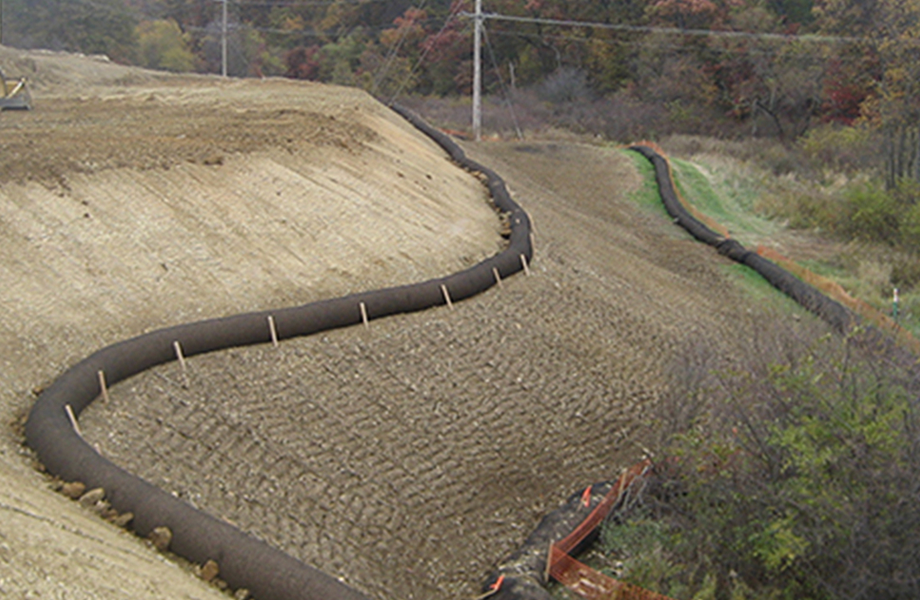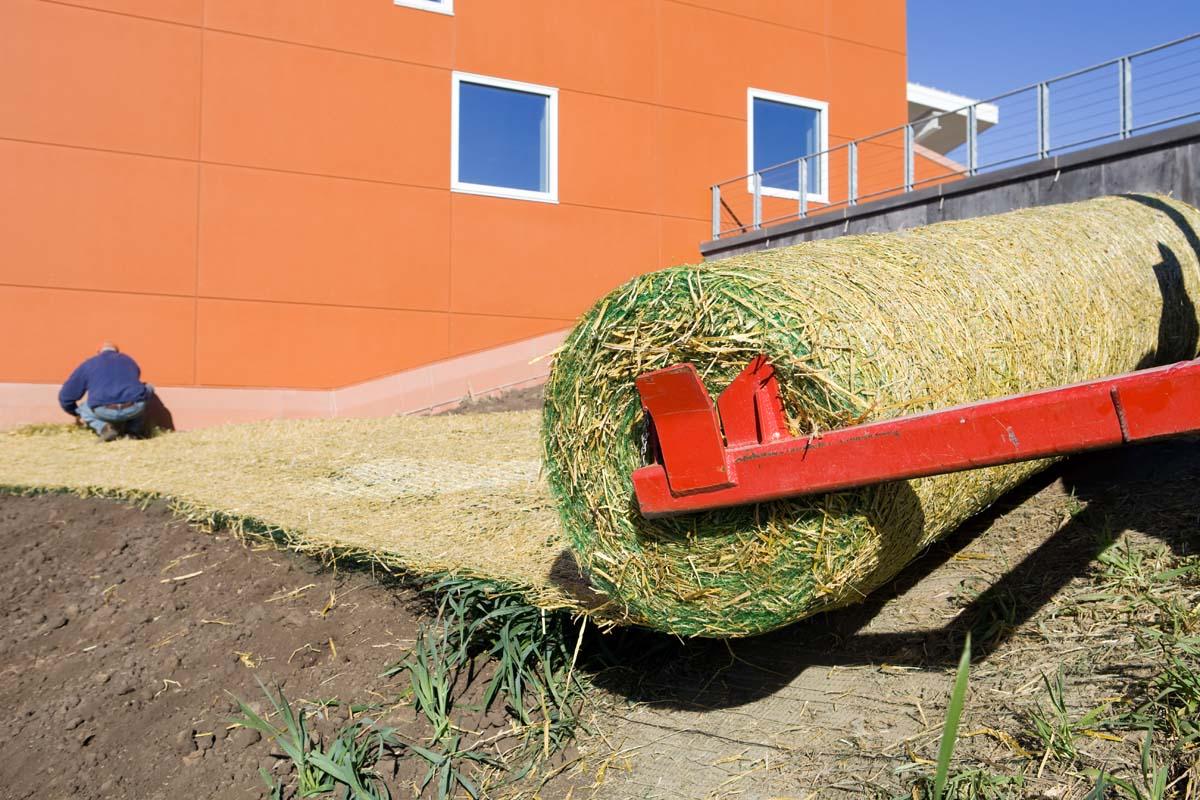Accurate Solutions from Memphis Erosion Control Solutions trenching
Wiki Article
Finest Practices for Erosion Control in Building Projects
Are you functioning on a building and construction project and concerned about disintegration control? In this write-up, we will direct you through the best practices for stopping erosion on your site. Memphis Erosion Control Solutions erosion control. Get all set to deal with disintegration head-on and ensure the success of your construction task.5 Important Erosion Control Techniques

To efficiently control erosion on your construction site, you'll require to carry out vital strategies such as slope stabilization and sediment control actions. Incline stabilization is critical in protecting against soil erosion on high inclines. You can attain this by utilizing methods like terracing, which involves creating horizontal steps on the incline to decrease water circulation and promote the absorption of rainwater. Another reliable technique is the use of disintegration control coverings or floor coverings, which are positioned on the slope and assistance preserve dirt fragments while permitting greenery to grow. Debris control actions are additionally important to stop sediment overflow right into neighboring water bodies. One effective approach is the setup of silt fencings along the boundary of the construction website. These fences work as obstacles, catching sediment-laden water and permitting it to work out prior to it reaches the water bodies. Furthermore, you can use sediment containers, which are temporary retention fish ponds designed to catch debris and allow water to gradually drain pipes off. Carrying out these necessary disintegration control techniques will certainly assist reduce the negative environmental effect of your building job and ensure conformity with policies.
Efficient Sediment and Runoff Management

You can properly handle debris and runoff in your building and construction task by executing appropriate disintegration control measures. Sediment and runoff monitoring is essential to avoid disintegration and safeguard the surrounding environment. One reliable procedure is the installation of silt fences along the boundary of the building site. These fences help to consist of debris and stop it from going into close-by water bodies. One more vital practice is the implementation of erosion control coverings or floor coverings. These blankets give a safety layer on bare dirt, lowering the influence of rains and protecting against erosion. In addition, the usage of debris containers or debris catches can assist to capture sediment and avoid it from going into stormwater systems. Routine maintenance of these measures is vital to ensure their performance throughout the building and construction task. This consists of examining and cleaning sediment containers and regularly changing silt fences and disintegration control coverings as required. By implementing these erosion control measures, you can successfully take care of debris and overflow in your construction task, reducing the effect on the environment and abiding by governing needs.
Trick Considerations for Slope Stablizing
When taking into consideration slope stabilization, it is necessary to evaluate the surface and determine potential areas of instability. You require to carefully check out the incline's qualities, such as its angle, composition, and drainage patterns. Look for indications of disintegration, such as subjected roots, splits, or down soil. These indicators can offer you a concept of where stabilization steps may be required.Once you have actually determined the unstable areas, you can start implementing actions to maintain the slope. One common approach is using maintaining walls or terracing to create a collection of flat steps, which can aid distribute the weight and avoid more disintegration. One more option is to grow greenery on the slope, as the roots can aid secure the soil and control erosion. Additionally, installing erosion control blankets or mats can offer immediate defense while plants ends up being well-known.
It's crucial to consistently monitor the stabilized slopes to ensure their performance. Watch out for any indicators of activity or erosion, and take prompt action if essential. Regular upkeep, such as inspecting and repairing any kind of damaged procedures, is additionally necessary to ensure long-lasting stability.
Finest Practices for Vegetation and Soil Security
If necessary,One efficient means to protect plants and dirt on slopes is by regularly inspecting for indicators of erosion and taking prompt action. By being proactive and watchful, you can prevent further damage and guarantee the security of check my reference the incline. Beginning by evaluating the slope for any type of indications of erosion, such as revealed origins, bare soil patches, or sediment accumulation at the bottom. It is critical to address the issue quickly if you observe any of these signs. Implement erosion control steps such as installing disintegration control blankets, mulching, or perhaps building maintaining wall surfaces if needed. In addition, growing plants can substantially aid in supporting the soil. Pick native plants that have deep root systems, as they are more reliable in protecting against disintegration. Make sure to consistently analyze the health and wellness of the greenery and provide required maintenance, like watering and feeding. Keep in mind, erosion can promptly aggravate and cause extreme damage, so it's necessary to address it immediately. By taking positive measures and regularly monitoring the incline, you can safeguard the vegetation and dirt, guaranteeing the lasting security of the location.Executing Appropriate Drain Solutions
To efficiently execute correct drain systems, it's vital to take into consideration the slope gradient and soil type. Comprehending these factors is crucial when it comes to taking care of water circulation and protecting against erosion. The incline gradient plays a significant function in identifying exactly how water moves across the land. Steeper inclines can lead to quicker water flow, increasing the danger of erosion and flooding. On the various other hand, gentler slopes enable water to stream more gradually, minimizing erosion possibility. By analyzing the incline gradient, you can make a reliable drain system that fits the natural water movement.Sandy dirts often tend to drain faster due to their coarse texture, while clay dirts have a slower drain rate due to their compact nature. Additionally, thinking about the dirt features assists stop waterlogging, which can lead to poor plant growth and damage to frameworks.
Verdict
In final thought, when it concerns erosion control in building projects, you should follow these best methods. Carry out efficient debris and runoff monitoring strategies to stop air pollution. Think about incline stabilization approaches to make sure the stability of the site. Safeguard greenery and dirt by utilizing ideal actions. Last but not least, develop correct drain systems to take care of water circulation. By following these essential techniques, you can efficiently control erosion and ensure the success of your building and construction task.To efficiently regulate disintegration on your construction site, you'll require to apply vital methods such as slope stabilization and sediment control procedures. always green landscaping Slope stablizing is crucial in stopping dirt disintegration on high inclines. An additional efficient technique is the usage of erosion control blankets or mats, Click This Link which are positioned on the incline and assistance maintain soil fragments while enabling greenery to grow. An additional alternative is to plant greenery on the incline, as the origins can help anchor the soil and control disintegration. Implement erosion control procedures such as mounting disintegration control coverings, mulching, or also constructing keeping wall surfaces if needed.
Report this wiki page